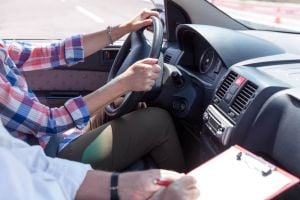
Berlin, Germany's capital and largest city, stretches out, covering an area of 891.8 km². Getting around Germany is easy and comfortable thanks to the extensive public transport network. Similarly, getting around Berlin is convenient as the city offers a well-connected public transport system, which includes trains, U-Bahn (i.e., subway), trams, buses, taxis, and bicycles.
Expats with valid driving licenses in Germany can rent a car. However, the most preferred way of getting from A to B is public transport. In this article, you will find some tips about how to navigate the public transport system and move around efficiently and cost-effectively without delays.
Public transportation in Berlin
BVG (i.e., The Berliner Verkehrsbetriebe) is Germany's biggest public transport company, operating buses, underground trains, trams, and ferries. The company takes frequent action to improve the quality of travel and modernize urban travel by using cutting-edge technology and allowing for innovative practices. BVG's network is divided into three zones (i.e., A, B, and C). Some of Berlin's most popular tourist attractions are in zone A; however, if you are working in Berlin, you will most likely need to move from one zone to another — from home to work and vice versa. Zone B is the periphery outside the city center, and zone C refers to the surrounding Brandenburg region, including Potsdam and Schönefeld airport. When it comes to travel fares, there are single-ride tickets and weekly and monthly transit passes. Ticket prices apply per zone, and you can choose the following ticket types: Single tickets are valid for up to two hours, including changing lines, as long as you are traveling in the same direction. Four-trip tickets are only valid for zones AB and tickets for short journeys (Kurzstrecke) are valid for up to three stops on S-Bahn and U-Bahn, and six stops on the tram and buses.
S-Bahn and subway in Berlin
Thanks to Berlin's railway network, you will be able to do your daily errands and visit the city's various tourist attractions, such as its natural and zoological parks, museums, etc. The Berlin subway will allow you to travel through the city efficiently and comfortably, and it is probably the preferable means of transport, especially for moving to and from work. The subway generally operates from 4 AM to 1 AM the next day during weekdays and 24/7 at the weekend. Cyclists can take their bikes on board for an additional fare, depending on the zone. Tickets can be purchased at train and subway stations or using the BVG app.
Good to know:
Children between six and 14 years old are eligible for discounted rates, and those under the age of six do not need a ticket to travel, provided their parents are accompanying them.
Good to know:
The Berlin WelcomeCard is Berlin's official tourist ticket for the public transport network, numerous attractions, and discounts on partners' offers.
Useful links:
VBB.de - Verkehrsverbund Berlin-Brandenburg | VBB
Trams and buses in Berlin
About 20 tramlines run through Berlin, mainly in eastern Berlin, including Hackeschermarkt and Alexanderplatz. The tram network plan is available at BVG kiosks and on its website. Note that trams run regularly, however, less frequently than the subway. Also, metro tram lines run more often than regular trams. On the other hand, the Berlin bus network operates on a 24/7 basis. Night buses are easily spotted thanks to the "N" letter preceding the line number, which stands for Nachtbus (i.e., night bus). Night rates are similar to those applied during the day. Fast buses, which make fewer stops on the way, are known as Expressbus, and they are recognized by the letter "X" preceding the line number. Similarly to the metro tram lines, metro buses run more often than regular bus lines. Note that bus tickets should be purchased in advance because the ticket has to be presented to the driver when you are boarding the bus.
Good to know:
Bus lines 100 and 200 are known to be tourist routes. By choosing these, you will be able to travel through the city center from Alexanderplatz to Zoologischer Garten.
Taxis and car rentals in Berlin
Berlin's taxis, usually Mercedez-Benz, are metered. There are thousands of private taxi companies operating in Berlin, meaning that there's healthy competition, and therefore, each company strives to keep high standards of service and keep customers happy. Taxi fares in Berlin taxis are affordable as fares are regulated, and ride prices are calculated by the taxi meter. You can get a taxi in the street, call one on the phone, walk to a taxi rank at one of the main transportation hubs or tourist spots, or use one of the many taxi apps. The starting fare is 3.90 euros, and the minimum fare per kilometer is 1.50 euros. To date, night rates do not apply in Berlin.
Before renting a car in Berlin, it is best to learn about traffic regulations and familiarise yourself with the challenges you may face, such as the lack of parking spaces and the presence of trams, etc. To drive through the city, you will have to purchase a green badge, as Berlin has been classified as a green zone since 2008 to discourage air pollution. Failure to comply with the rule will result in a fine of 80 euros.
Useful links:
Order online the green sticker
Cycling in Berlin
Bikes are an economical and eco-friendly means of transport in Berlin and are very popular with the locals, who are most likely to own a bicycle than a car. The city's governors have invested in the population's eagerness to move by bike and have invested a significant amount of funds in creating a top-notch, safe cycling infrastructure. For example, in Berlin, there are more and more dedicated bike lanes where cyclists are at a safe distance from automobile traffic, and there's a plan to build about 100 kilometers of bike routes, which will connect the suburbs with the city center. If you want to rent a bike in Berlin for your daily movement, the Nextbike bike rental system has around 2,500 affordable bikes.
Good to know:
Cargo bikes are very popular in Germany as they can accommodate the needs of families, dog owners, and individuals who want to transfer big items (e.g., furniture) or use the bike to go for weekly shopping. Now, you can rent a cargo bike for free via fLotte Berlin, a free cargo bike project initiated and implemented by the German bike association (ADFC) and enhanced by Berlin local authorities and the city of Berlin to encourage less ownership of cars.
Useful link:
We do our best to provide accurate and up to date information. However, if you have noticed any inaccuracies in this article, please let us know in the comments section below.











